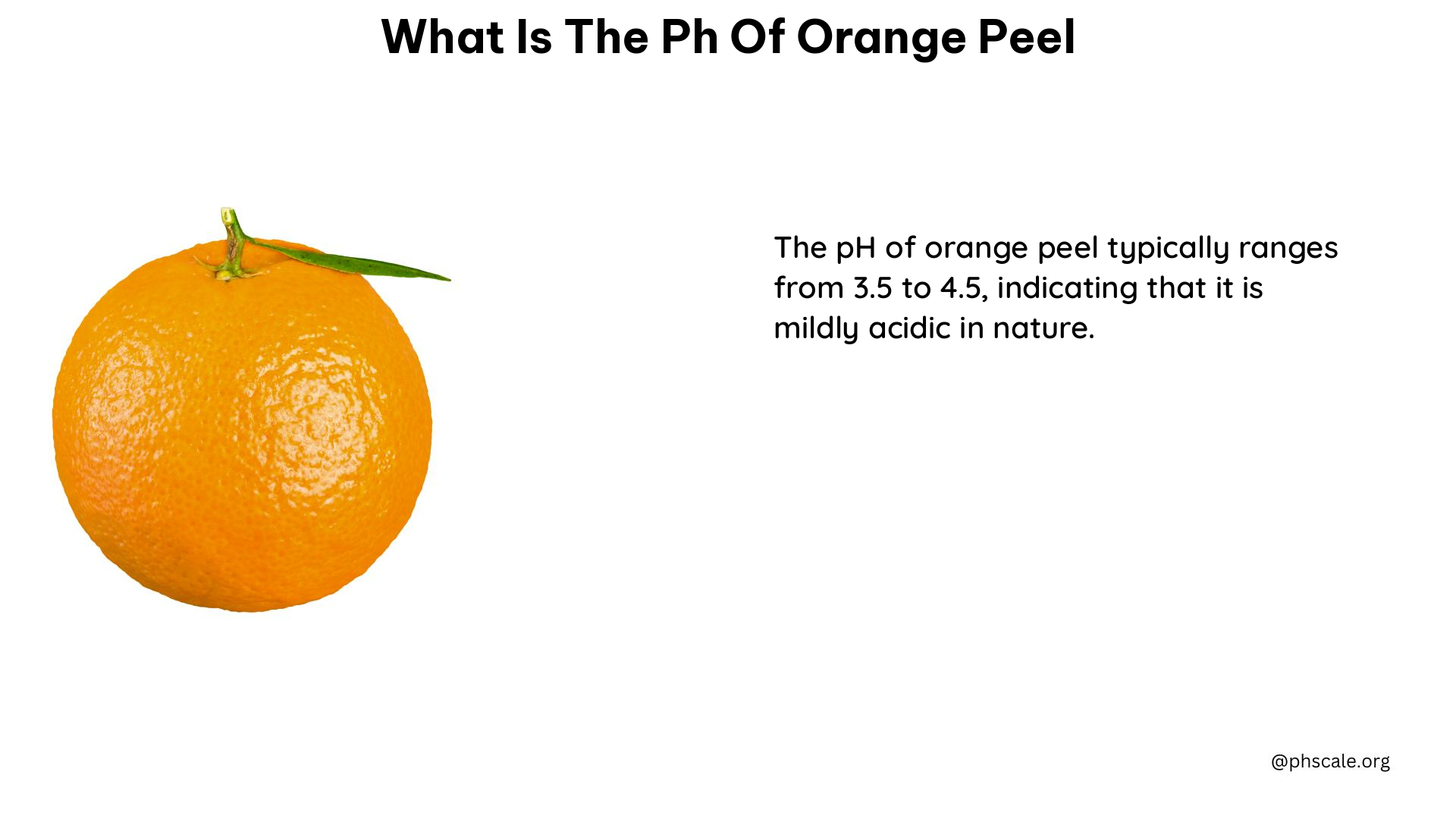The pH of orange peel is typically in the range of 3 to 4, indicating that it is slightly acidic. This acidity can be attributed to the presence of various organic acids, such as citric acid, malic acid, and ascorbic acid, which are naturally found in orange peels.
Measuring the pH of Orange Peel
Researchers have used various methods to determine the pH of orange peel, including direct measurement and analysis of fruit peel extracts. Here are some key findings:
-
Direct Measurement: A study on fruit peel waste characterization found that the surface pH values of orange peel are in the range of 3–4.
-
Fruit Peel Extracts: Another study reported that orange and tangerine peels average a pH of around 4.22 when measured in fruit peel extracts.
-
Comparative Analysis: A study on pH values of fruit juices and fruit peel extracts recorded a pH of 6.62 ± 2.2 in orange peels, indicating a slightly acidic nature.
These findings suggest that the pH of orange peel can vary slightly depending on the specific measurement method and the individual characteristics of the orange variety.
Factors Affecting the pH of Orange Peel

The pH of orange peel can be influenced by several factors, including:
-
Variety: Different orange varieties may have slightly different pH levels due to variations in their chemical composition.
-
Maturity: The pH of orange peel may change as the fruit matures and the chemical composition evolves.
-
Growing Conditions: Environmental factors, such as soil composition, climate, and cultivation practices, can also affect the pH of orange peel.
-
Processing: The way orange peels are handled and processed, such as drying or extraction, can potentially impact their pH levels.
Understanding these factors can help researchers and industries better predict and control the pH of orange peel for various applications.
Applications of Orange Peel pH
The slightly acidic nature of orange peel can be beneficial in various applications, including:
-
Culinary Uses: The acidity of orange peel can be used to add a tangy flavor to dishes, marinades, and dressings.
-
Natural Remedies: Orange peel has been used in traditional medicine and natural remedies due to its acidic properties, which may have antimicrobial and anti-inflammatory effects.
-
Cleaning and Deodorizing: The acidity of orange peel can be used as a natural cleaning agent and deodorizer, helping to remove grease and odors.
-
Cosmetic and Personal Care: The pH of orange peel can be leveraged in the development of natural cosmetic and personal care products, such as skin care formulations and hair care products.
-
Agricultural Applications: The acidic nature of orange peel can be utilized in agricultural applications, such as soil pH adjustment or as a natural pesticide.
Understanding the pH of orange peel is crucial for optimizing these applications and ensuring the desired outcomes.
Conclusion
The pH of orange peel is typically in the range of 3 to 4, indicating that it is slightly acidic. This acidity is due to the presence of various organic acids, such as citric acid, malic acid, and ascorbic acid, which are naturally found in orange peels.
Researchers have used various methods to measure the pH of orange peel, including direct measurement and analysis of fruit peel extracts. The pH of orange peel can be influenced by factors such as variety, maturity, growing conditions, and processing.
The slightly acidic nature of orange peel can be beneficial in various applications, including culinary uses, natural remedies, cleaning and deodorizing, cosmetic and personal care, and agricultural applications. Understanding the pH of orange peel is crucial for optimizing these applications and ensuring the desired outcomes.
References:
- https://www.reddit.com/r/NoStupidQuestions/comments/nsn3xu/are_orange_peels_acidic/
- https://www.researchgate.net/figure/pH-values-of-fruit-juices-and-fruit-peel-extracts-SD-n3_tbl1_284513413
- https://www.linkedin.com/pulse/fruit-peel-waste-characterization-its-potential-uses-sachin
- https://www.houzz.com/discussions/1629815/orange-peel-ph
- https://fdc.nal.usda.gov/fdc-app.html
